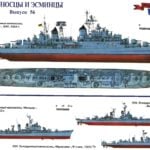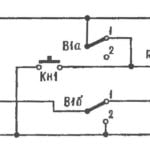 Buernomu sport in the USSR has a long and glorious tradition. He was born before the revolution, but was at that time available only to a very narrow circle of rich people and General development have not received. After the great October revolution, the picture changed dramatically: in yacht-clubs came young workers, buernomu sport started to develop there have Been many new models for “ice yacht”, and in the Northern parts of our country where the winter is long and a lot of ponds, Buer began to acquire some economic importance as a reliable means of winter transportation. It is appropriate, for example, recall that beresti of Leningrad, took an active part in the defense of the hero city during the siege of 1941-1943 years.
Buernomu sport in the USSR has a long and glorious tradition. He was born before the revolution, but was at that time available only to a very narrow circle of rich people and General development have not received. After the great October revolution, the picture changed dramatically: in yacht-clubs came young workers, buernomu sport started to develop there have Been many new models for “ice yacht”, and in the Northern parts of our country where the winter is long and a lot of ponds, Buer began to acquire some economic importance as a reliable means of winter transportation. It is appropriate, for example, recall that beresti of Leningrad, took an active part in the defense of the hero city during the siege of 1941-1943 years.
Particularly interesting is the work of enthusiasts buernomu sport in the postwar years. The emergence of new types of ice-boats, first and foremost, with a rigid sail-wing, expanded the capabilities of these remarkable devices. Athletes bearista mastered a new speed, a new technique of control “ice yachts”. However, further increase of grassroots and availability buernomu sport is seriously hampered by the lack of small cheap ice boats are simplified for individual use, which could have been purchased ready sportmagazine as, say, an inflatable boat or a tourist boat, or to build their own from abundant materials. Most probably these mini snowmobiles are needed for children and adolescents, which has not the strength to manage real sports iceboat. Partially solves the problem of Buer class DP-6 (a description, see “M-K” № 3, 1968). However, for children’s sports groups can be created more simple and cheap design quality of the sail for which you can apply the sail of the windsurfer, with minimal alterations, not excluding its use in summer, for its intended purpose.
Such attempt was undertaken by the designers of OKB “M-K”. Today we want to introduce this development to our readers. Make a reservation in advance: the results of this Buer-baby may show only on smooth ice, having snow drifts, ice, etc. On the ice, covered with even a thin layer of snow, it goes worse. So, get acquainted — Buer-tiny.
“Snowflake” will be able to build everyone more or less owns the joiner’s and locksmith tools. And when the collective work in the school or on the technical circle of young technicians Buer can be made in just a few evenings.
The overall layout of the glider shown in figure 1. The main part of the platform to which is attached a mast with a triangular sail the Bermuda type with an area of 4 m2 and transverse Board, load side fixed skates. Tie the skate as well as the Buer class days-6, located at the bow of the platform and is controlled by the steering wheel of the automotive type, installed at the base of the mast. This is an interesting feature of the “Snowflake” — thanks to this control system the driver can lie on the platform, head in the direction of motion. The result lowered the overall center of gravity, reduces drag and, most importantly, extremely lowered the boom and maneuver them become safe for the athlete.

Fig. 1. General view of microbeer “snowflake” and the principal dimensions.

Fig. 2. The sequence of manufacturing platforms:
A — frame Assembly: 1 — lateral bars (pine 2300X100X25 mm), 2 — inner tie bar (pine strata. 25 mm), 3 — outer cross member (pine 50×25 mm); B — covering frame with plywood 4 plywood panel, pre-joined “on condition”, 5 — metal squares; — installation of metal detailed: 6 — bushing front fork, 7 — Cup the base of the mast.
To build ice boats-crumbs you will need the following materials: three well-dried pine boards the size of 2300X100X25 mm (sidewall of the platform and its frame), one Board (transverse) 2100x120x25, two sheets of waterproof plywood 1500X1500 mm with thickness of 6-8 mm for covering the platform at the top and bottom and pine bar length 3500 mm and a cross section of 60×60 mm mast.
The platform collected on waterproof glue and after a few pas paint oil or glyptal paint. The Assembly sequence shown in figure 2. First on the smooth floor draws a contour of the platform. Here the frame is assembled and one side is sheathed with plywood (mount — adhesive and nails “Usagi”). Useful top loading design, for example, with bricks, leaving them to fully cure the adhesive. Then line the surface of the bars of the frame, glue the second plywood panel and pull up nails and screws alternately.
It is now possible to manufacture metal parts for the rotating mechanism, the skates, the base of the mast and the steering wheel (Fig. on the tab). For skates better suited to a bronze plate with a thickness of 8-10 mm; in a pinch you can use unusable or just unnecessary hockey skates. Steering drums, one of which is installed on the head steering of the skate, and the other is rigidly mounted to the steering wheel, are made of aluminum or made of water-resistant wood and placed on the metal flanges. The steering cable with a thickness of 3-4 mm to prevent slippage on the pulleys laid in a few turns.
Transverse Board is treated by a plane, tsiklej and sandpaper in accordance with the drawing, covered with waterproof paint and attached to the platform with four bolts M8, with large round or rectangular washers prevent extrusion of wood: in a fast moving glider cross-Board experiences significant loads! (For the same reason, you should very carefully collect steering and lateral skates, making sure that the backlash in the joints was minimal.)
The mast has a circular cross-section and variable diameter along the length at the base 45, at a height of 1200 mm from the platform 60 mm and at the upper end of 35 mm. the Mast of such a shape easily and resists loads. It is necessary to carefully whittle in accordance with the drawing, process semicircular tsiklej, and sandpaper, and then a few times to cover water-resistant oil-resin varnish or parquet. Apply dural tube is not recommended. The lower end of the mast is inserted into the metal Cup of the base and additionally fixed to the platform three extensions of 4 mm rope: one in front (the forestay) and laterally by two (guys). Mounting parts stretch to the mast and the platform shown in the figure.

BUER “SNOWFLAKE”:
1 — guy, 2 — thunder guys, 3— the right side of the ridge 4 — forestay, 5 — reel steering of the skate, 6 — steering bumps, 7 — fork the steering of the skate, 8 — designated place, 9 — tenders of a designated place, 10 main steering drum, 11—wheel, 12 — Cup the base of the mast 13 platform 14 — the cross 15 — left guy, 16 — fork side of the ridge, 17 — boom-sail sheet 18 is rear cross platform, 19 — block boom-mainsheet, 20 — geek.
As already mentioned above, the “snowflake” is equipped with a Bermuda sail. If the “economy” of the Builder, a sail for a windsurfer, it can be used without any alterations, but it’s better to sew a special. The design is simple, and if we can buy the necessary material (Dacron or cloth “sail”, which is used yachtsmen), and the sewing of run on the machine “zigzag”, the quality of the sail will be very high. A cheaper substitute — feather fabric or pillow tick. For our sail will need about 10 linear metres (depending on width). Drawing cutting (see Fig. 1) made in relation to the matter with a width of 75 cm.
At the front of the sail has a sleeve into which is inserted the mast. The boom in the lower part consists of two semi-circular halves, fastened with 5-mm bolts. Such a system of rig is very simple and at the same time has a high aerodynamic quality. A boom attached to the mast by a swivel (see Fig. 1). To control the sail need ghica-sheet (a string or a good rope with a diameter of about 10 mm) and two blocks. One of them is attached to the boom, the other to the platform, and through them is passed the boom-sheet, as shown in figure 1. The end of the boom-sheet of the driver of the Buer when driving holds in his hands.
Buernomu sport is extremely exciting, but managing the “ice yachts” is very specific. To avoid possible failures, as it should learn the theory first and foremost, try to read the book N. Lyudevig “Buer”.
G. MALINOWSKI, master of sports of the USSR



